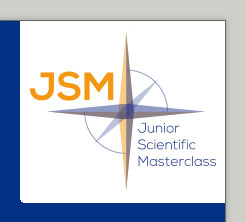Onderzoeksproject aanpassen
Projecten zijn uitsluitend aan te passen door bij het project behorende onderzoekers.
Geef via het uitrolmenu aan welke onderzoeker u bent. Nadat op u de button 'Edit project' heeft geklikt, wordt automatisch een e-mail verstuurd naar het e-mailadres van de onderzoeker die u heeft gespecificeerd.
In deze e-mail staat een link waarmee u het project kunt wijzigen.
Project properties
| Title | Type 1 diabetes-induced alterations in islets of Langerhans |
|---|---|
| Keywords | Advanced Microscopy beta cell destruction insulitis |
| Researchers |
dr. B.N.G. Giepmans P. de Boer |
| Nature of the research | Cell Biology/ Medical Biology: - Electron microscopy sample preparation, including ultramicrotomy - Post/pre-embedding immunolabeling - (Confocal) light microscopy - Large-scale electron microscopy5, 7 (www.nanotomy.org) |
| Fields of study | cell biology molecular imaging diabetes |
| Research question / problem definition |
|---|
| Investigate the role of bihormonal cells and/or affected exocrine pancreas in normoglycaemic, diabetic-prone rats and human material in relation to early-onset T1D. |
| Workplan |
|---|
|
Immunolabeling to identify different cell types (incl. bihormonal) in islets of Langerhans of both rat and human material in a CLEM approach. Quantum dots are used for immune-fluorescence and EM localization7 Analyse large-scale electron microscopy datasets to score the appearance of bihormonal cells, aberrant exocrine cells and/or other abnormalities in both rat and human T1D material versus controls. |
| References |
|---|
|
1. Thorel, F. et al. Conversion of adult pancreatic alpha-cells to beta-cells after extreme beta-cell loss. Nature 464, 1149-1154 (2010). 2. Chera, S. et al. Diabetes recovery by age-dependent conversion of pancreatic delta-cells into insulin producers. Nature 514, 503-507 (2014). 3. Piran, R. et al. Pharmacological induction of pancreatic islet cell transdifferentiation: relevance to type I diabetes. Cell. Death Dis. 5, e1357 (2014). 4. de Boer, P., Hoogenboom, J.. & Giepmans, B. N. Correlated light and electron microscopy: ultrastructure lights up! Nat. Methods 12, 503-513 (2015). 5. Ravelli, R.. et al. Destruction of tissue, cells and organelles in type 1 diabetic rats presented at macromolecular resolution. Sci. Rep. 3, 1804 (2013). 6. Campbell-Thompson, M. L. et al. The influence of type 1 diabetes on pancreatic weight. Diabetologia 59, 217-221 (2016). 7. Kuipers, J., de Boer, P. & Giepmans, B. N. Scanning EM of non-heavy metal stained biosamples: Large-field of view, high contrast and highly efficient immunolabeling. Exp. Cell Res. 337, 202-207 (2015). |



